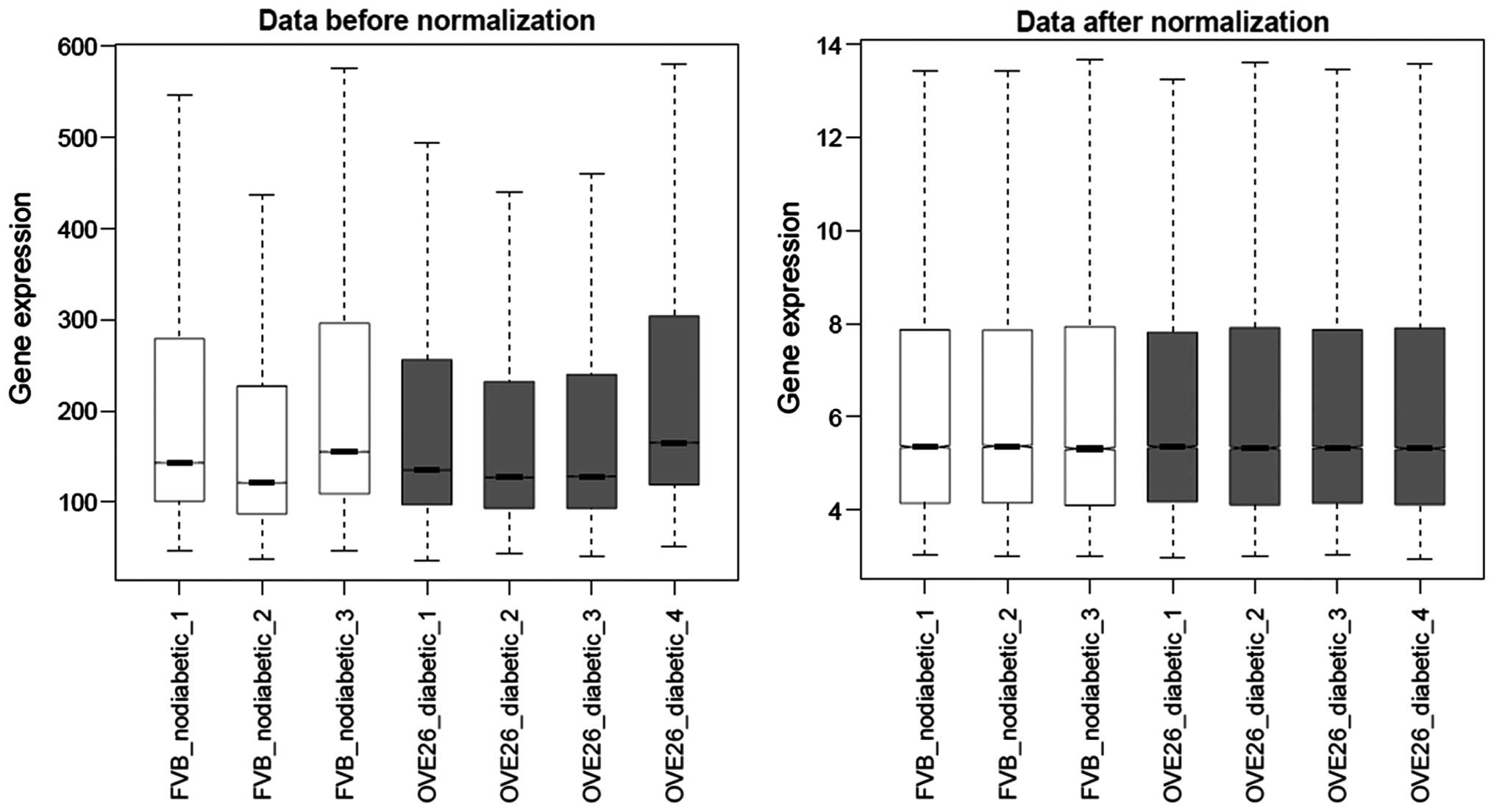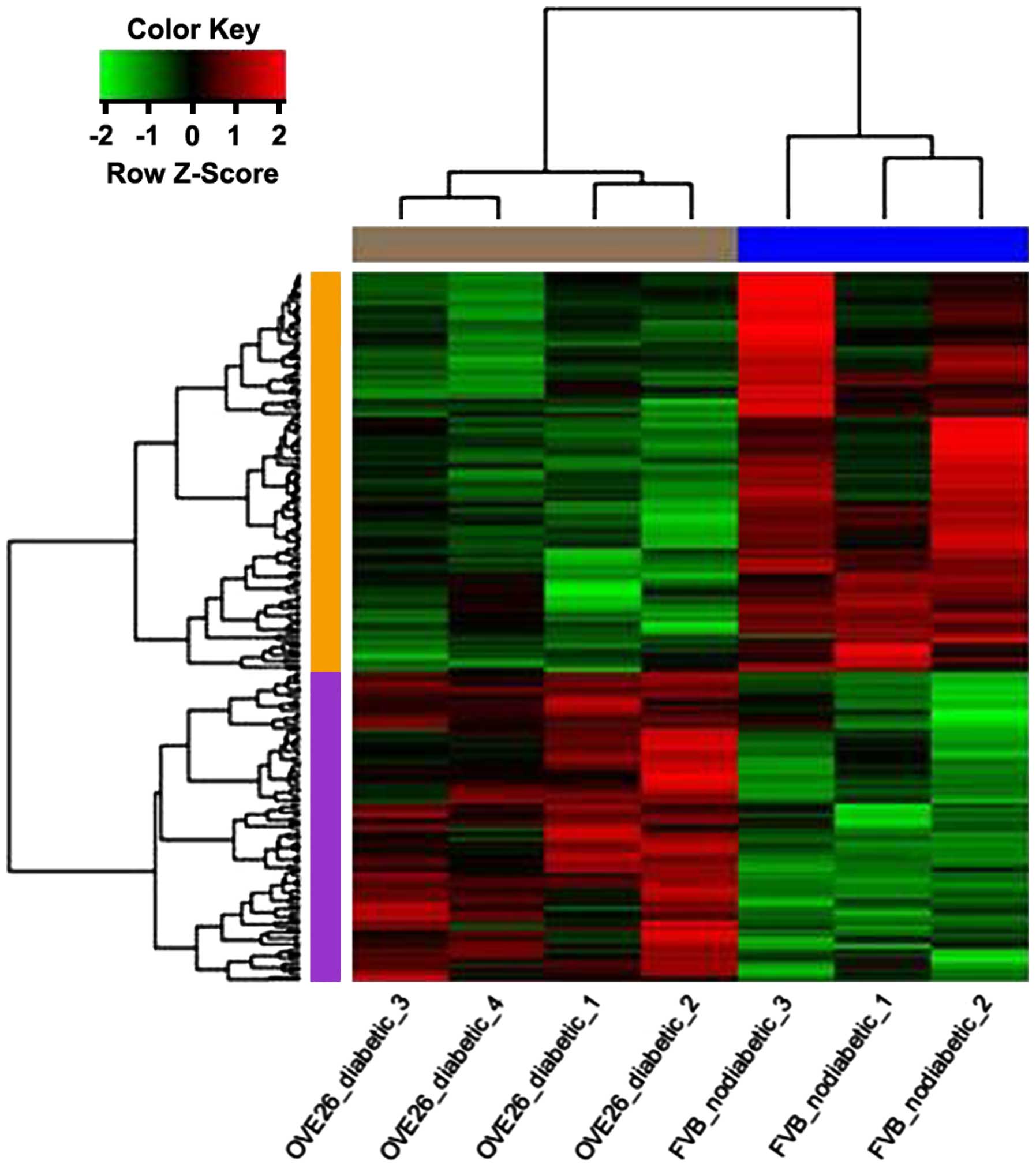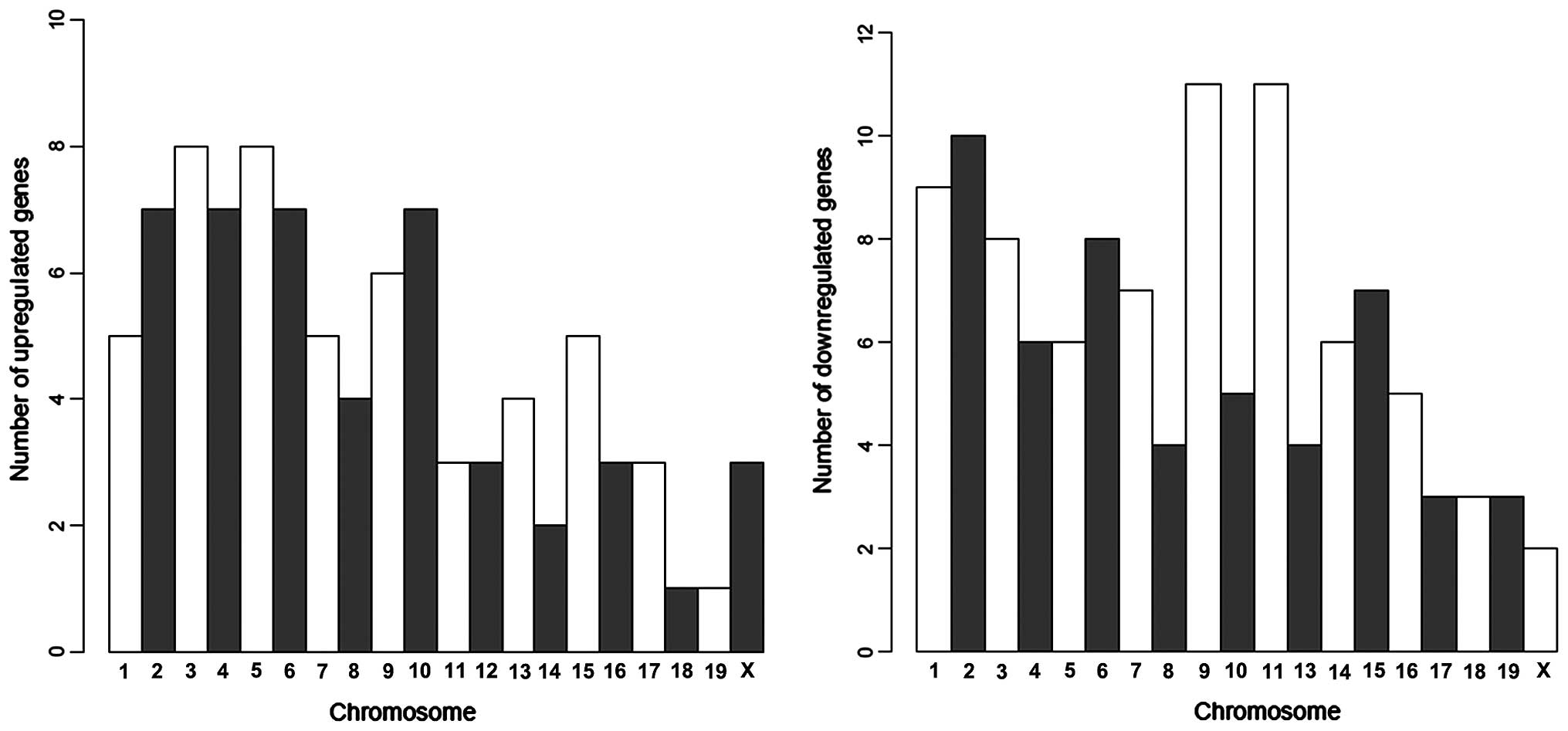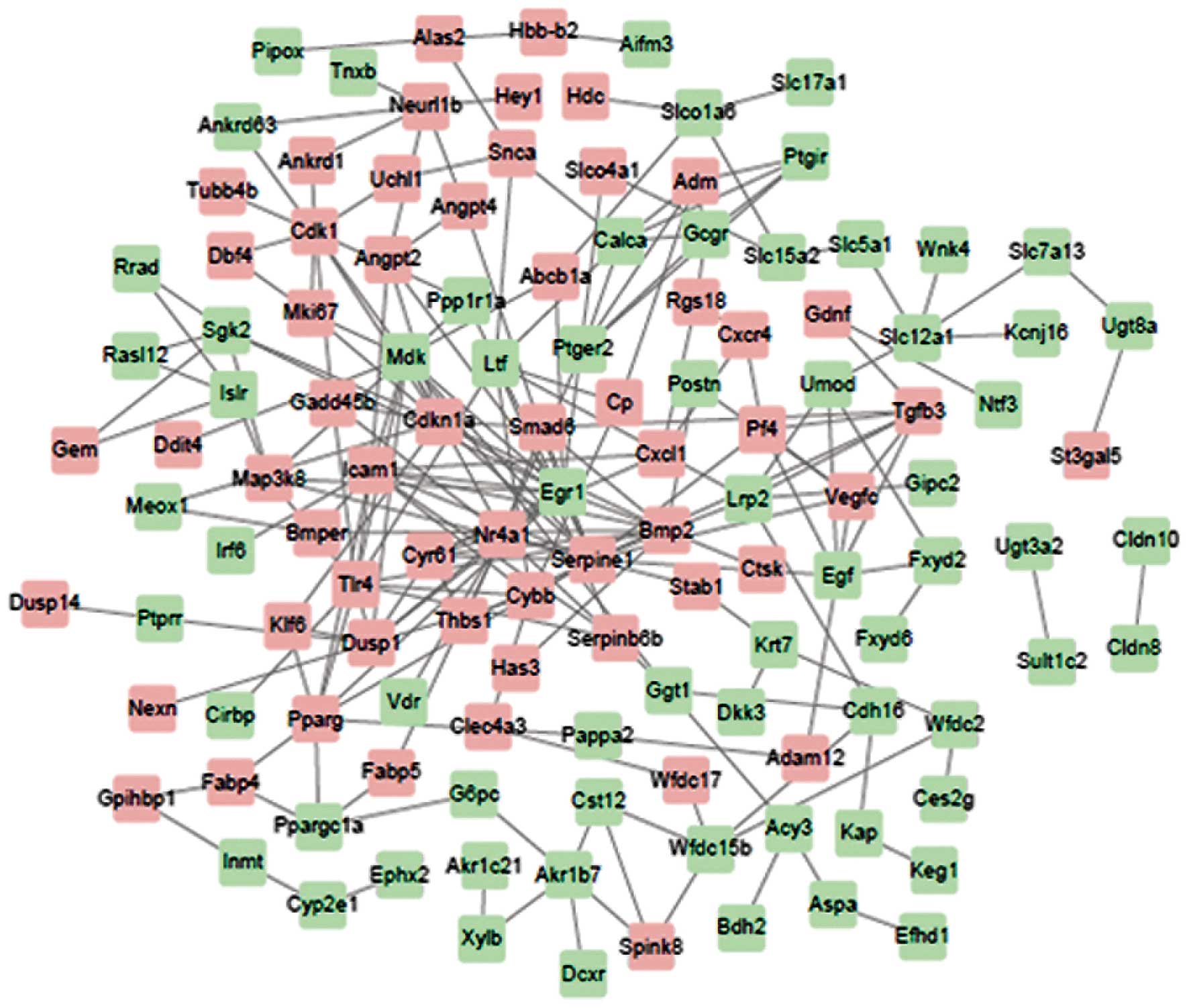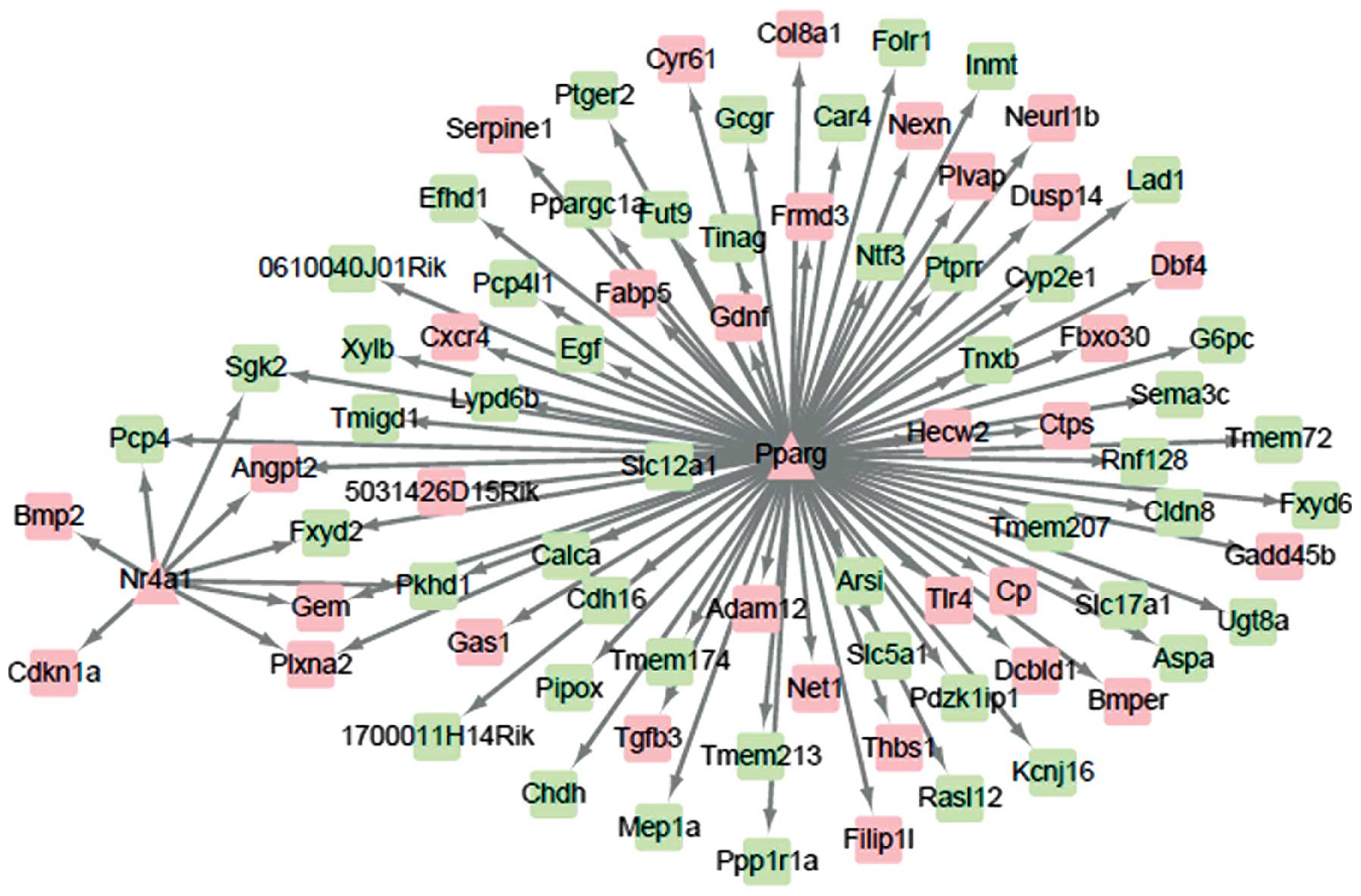|
1
|
Sun YM, Su Y, Li J and Wang LF: Recent
advances in understanding the biochemical and molecular mechanism
of diabetic nephropathy. Biochem Biophys Res Commun. 433:359–361.
2013. View Article : Google Scholar : PubMed/NCBI
|
|
2
|
Gross JL, de Azevedo MJ, Silveiro SP,
Canani LH, Caramori ML and Zelmanovitz T: Diabetic nephropathy:
diagnosis, prevention, and treatment. Diabetes Care. 28:164–176.
2005. View Article : Google Scholar
|
|
3
|
Navarro-González JF, Mora-Fernández C,
Muros de Fuentes M and García-Pérez J: Inflammatory molecules and
pathways in the pathogenesis of diabetic nephropathy. Nat Rev
Nephrol. 7:327–340. 2011. View Article : Google Scholar : PubMed/NCBI
|
|
4
|
Luis-Rodríguez D, Martínez-Castelao A,
Górriz JL, De-Álvaro F and Navarro-González JF: Pathophysiological
role and therapeutic implications of inflammation in diabetic
nephropathy. World J Diabetes. 3:7–18. 2012. View Article : Google Scholar : PubMed/NCBI
|
|
5
|
Xie X, Peng J, Chang X, Huang K, Huang J,
Wang S, Shen X, Liu P and Huang H: Activation of RhoA/ROCK
regulates NF-κB signaling pathway in experimental diabetic
nephropathy. Mol Cell Endocrinol. 369:86–97. 2013. View Article : Google Scholar : PubMed/NCBI
|
|
6
|
Lamb J, Crawford ED, Peck D, Modell JW,
Blat IC, Wrobel MJ, Lerner J, Brunet J-P, Subramanian A, Ross KN,
et al: The Connectivity Map: using gene-expression signatures to
connect small molecules, genes, and disease. Science.
313:1929–1935. 2006. View Article : Google Scholar : PubMed/NCBI
|
|
7
|
Reiniger N, Lau K, McCalla D, Eby B, Cheng
B, Lu Y, Qu W, Quadri N, Ananthakrishnan R, Furmansky M, et al:
Deletion of the receptor for advanced glycation end products
reduces glomerulosclerosis and preserves renal function in the
diabetic OVE26 mouse. Diabetes. 59:2043–2054. 2010. View Article : Google Scholar : PubMed/NCBI
|
|
8
|
Gautier L, Cope L, Bolstad BM and Irizarry
RA: affy-analysis of Affymetrix GeneChip data at the probe level.
Bioinformatics. 20:307–315. 2004. View Article : Google Scholar : PubMed/NCBI
|
|
9
|
Smyth GK: limma: linear models for
microarray data. Bioinformatics and Computational Biology Solutions
Using R and Bioconductor. Gentleman R, Carey VJ, Huber W, Irizarry
RA and Dudoit S: Springer; New York, NY: pp. 397–420. 2005,
View Article : Google Scholar
|
|
10
|
Huang W, Sherman BT and Lempicki RA:
Systematic and integrative analysis of large gene lists using DAVID
bioinformatics resources. Nat Protoc. 4:44–57. 2009. View Article : Google Scholar
|
|
11
|
Szklarczyk D, Franceschini A, Wyder S,
Forslund K, Heller D, Huerta-Cepas J, Simonovic M, Roth A, Santos
A, Tsafou KP, et al: STRING v10: protein-protein interaction
networks, integrated over the tree of life. Nucleic Acids Res.
43:D447–D452. 2014. View Article : Google Scholar : PubMed/NCBI
|
|
12
|
Tang Y, Li M, Wang J, Pan Y and Wu FX:
CytoNCA: a cytoscape plugin for centrality analysis and evaluation
of protein interaction networks. Biosystems. 127:67–72. 2015.
View Article : Google Scholar
|
|
13
|
Jeong H, Mason SP, Barabási AL and Oltvai
ZN: Lethality and centrality in protein networks. Nature.
411:41–42. 2001. View
Article : Google Scholar : PubMed/NCBI
|
|
14
|
Goh KI, Oh E, Kahng B and Kim D:
Betweenness centrality correlation in social networks. Phys Rev E
Stat Nonlin Soft Matter Phys. 67:0171012003. View Article : Google Scholar : PubMed/NCBI
|
|
15
|
Estrada E and Rodríguez-Velázquez JA:
Subgraph centrality in complex networks. Phys Rev E Stat Nonlin
Soft Matter Phys. 71:0561032005. View Article : Google Scholar : PubMed/NCBI
|
|
16
|
Zhang HM, Liu T, Liu CJ, Song S, Zhang X,
Liu W, Jia H, Xue Y and Guo AY: AnimalTFDB 2.0: a resource for
expression, prediction and functional study of animal transcription
factors. Nucleic Acids Res. 43:D76–D81. 2014. View Article : Google Scholar : PubMed/NCBI
|
|
17
|
Janky R, Verfaillie A, Imrichová H, Van de
Sande B, Standaert L, Christiaens V, Hulselmans G, Herten K, Naval
Sanchez M, Potier D, et al: iRegulon: from a gene list to a gene
regulatory network using large motif and track collections. PLoS
Comput Biol. 10:e10037312014. View Article : Google Scholar : PubMed/NCBI
|
|
18
|
Go AS, Chertow GM, Fan D, McCulloch CE and
Hsu CY: Chronic kidney disease and the risks of death,
cardiovascular events, and hospitalization. N Engl J Med.
351:1296–1305. 2004. View Article : Google Scholar : PubMed/NCBI
|
|
19
|
Pfeffer MA, Burdmann EA, Chen C-Y, Cooper
ME, de Zeeuw D, Eckardt K-U, Feyzi JM, Ivanovich P, Kewalramani R,
Levey AS, et al: TREAT Investigators: A trial of darbepoetin alfa
in type 2 diabetes and chronic kidney disease. N Engl J Med.
361:2019–2032. 2009. View Article : Google Scholar : PubMed/NCBI
|
|
20
|
Deshpande SD, Putta S, Wang M, Lai JY,
Bitzer M, Nelson RG, Lanting LL, Kato M and Natarajan R:
Transforming growth factor-β-induced cross talk between p53 and a
microRNA in the pathogenesis of diabetic nephropathy. Diabetes.
62:3151–3162. 2013. View Article : Google Scholar : PubMed/NCBI
|
|
21
|
Fang Y, Tian X, Bai S, Fan J, Hou W, Tong
H and Li D: Autologous transplantation of adipose-derived
mesenchymal stem cells ameliorates streptozotocin-induced diabetic
nephropathy in rats by inhibiting oxidative stress,
pro-inflammatory cytokines and the p38 MAPK signaling pathway. Int
J Mol Med. 30:85–92. 2012.PubMed/NCBI
|
|
22
|
Adhikary L, Chow F, Nikolic-Paterson DJ,
Stambe C, Dowling J, Atkins RC and Tesch GH: Abnormal p38
mitogen-activated protein kinase signalling in human and
experimental diabetic nephropathy. Diabetologia. 47:1210–1222.
2004. View Article : Google Scholar : PubMed/NCBI
|
|
23
|
Oda T, Jung YO, Kim HS, Cai X, López-Guisa
JM, Ikeda Y and Eddy AA: PAI-1 deficiency attenuates the fibrogenic
response to ureteral obstruction. Kidney Int. 60:587–596. 2001.
View Article : Google Scholar : PubMed/NCBI
|
|
24
|
Kitching AR, Kong YZ, Huang XR, Davenport
P, Edgtton KL, Carmeliet P, Holdsworth SR and Tipping PG:
Plasminogen activator inhibitor-1 is a significant determinant of
renal injury in experimental crescentic glomerulonephritis. J Am
Soc Nephrol. 14:1487–1495. 2003. View Article : Google Scholar : PubMed/NCBI
|
|
25
|
Alvarez ML and DiStefano JK: Functional
characterization of the plasmacytoma variant translocation 1 gene
(PVT1) in diabetic nephropathy. PLoS One. 6:e186712011. View Article : Google Scholar : PubMed/NCBI
|
|
26
|
Rerolle JP, Hertig A, Nguyen G, Sraer JD
and Rondeau EP: Plasminogen activator inhibitor type 1 is a
potential target in renal fibrogenesis. Kidney Int. 58:1841–1850.
2000. View Article : Google Scholar : PubMed/NCBI
|
|
27
|
Lassila M, Fukami K, Jandeleit-Dahm K,
Semple T, Carmeliet P, Cooper ME and Kitching AR: Plasminogen
activator inhibitor-1 production is pathogenetic in experimental
murine diabetic renal disease. Diabetologia. 50:1315–1326. 2007.
View Article : Google Scholar : PubMed/NCBI
|
|
28
|
Kosugi T and Sato W: Midkine and the
kidney: health and diseases. Nephrol Dial Transplant. 27:16–21.
2012. View Article : Google Scholar
|
|
29
|
Gil N, Goldberg R, Neuman T, Garsen M,
Zcharia E, Rubinstein AM, van Kuppevelt T, Meirovitz A, Pisano C,
Li JP, et al: Heparanase is essential for the development of
diabetic nephropathy in mice. Diabetes. 61:208–216. 2012.
View Article : Google Scholar :
|
|
30
|
McMorrow JP and Murphy EP: Inflammation: a
role for NR4A orphan nuclear receptors? Biochem Soc Trans.
39:688–693. 2011. View Article : Google Scholar : PubMed/NCBI
|
|
31
|
Hagiwara S, Mcclelland A and Kantharidis
P: MicroRNA in diabetic nephropathy: renin angiotensin, aGE/RAGE,
and oxidative stress pathway. J Diabetes Res. 2013:1737832013.
View Article : Google Scholar
|
|
32
|
Westbrook L, Johnson AC, Regner KR,
Williams JM, Mattson DL, Kyle PB, Henegar JR and Garrett MR:
Genetic susceptibility and loss of Nr4a1 enhances
macrophage-mediated renal injury in CKD. J Am Soc Nephrol.
25:2499–2510. 2014. View Article : Google Scholar : PubMed/NCBI
|
|
33
|
Lapice E, Pinelli M, Riccardi G and
Vaccaro O: Pro12Ala polymorphism in the PPARG gene contributes to
the development of diabetic nephropathy in Chinese type 2 diabetic
patients: comment on the study Liu et al. Diabetes Care.
33:e114author reply e115. 2010. View Article : Google Scholar
|















